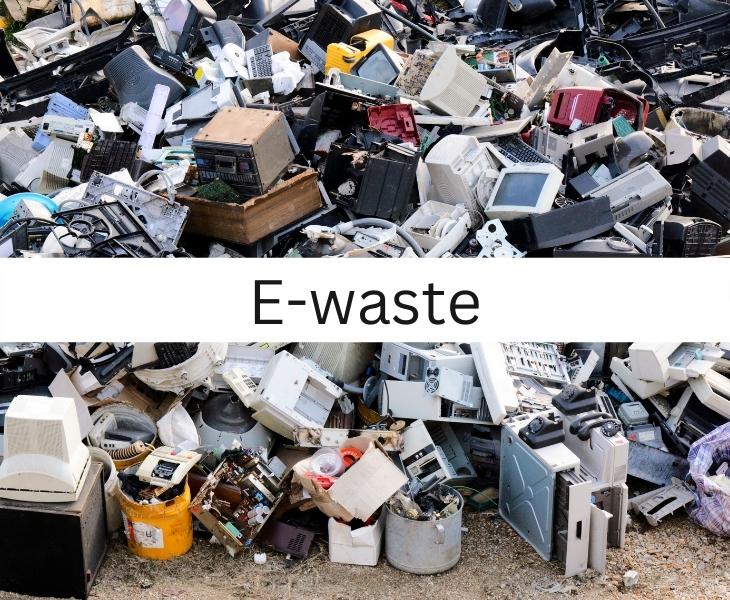Over the years, technology has transformed our world and daily lives. Technology is constantly evolving, and the rapid advancement has resulted in everyone’s dependency on the replacement of older devices and gadgets with upgraded ones to accommodate fast-changing new technology. As a result, the amount of e-waste generated by discarding obsolete electronics is the world’s fastest–growing waste stream.
According to the UN, Australia is one of the world’s top producers of e-waste, ranking fifth with 21.7kg of waste per person reported in 2019. Our e-waste output is growing 3 x times faster than our general waste output. Every year, 88 percent of the 4 million computers and 3 million televisions purchased in Australia end up in landfill, contributing to over 140,000 tonnes of electronic waste.

What is E-waste?
E-waste is defined as any product with a plug, cord, battery, or electronic component that has been discarded due to its ‘end of life’ or obsolescent status. It commonly includes laptops, screens, kitchen appliances, mobile phones, tablets, TV screens, and printers. Many of these products can be reused, refurbished, or recycled, as they often contain valuable materials like plastic and precious metals including gold, silver, platinum, nickel, zinc, aluminium, and copper. Recycling these materials prevents new electronics from being created using new or ‘virgin’ materials.
Why don’t people consider e-waste recycling?
Due to concerns about data loss and perceived high costs, Australian households and businesses do not recycle their outdated computers, tablets, televisions, and printers. According to a 2017 Ipsos poll, while three-quarters of Australians are aware that their electronic devices can be recycled and reused, only 8 percent actually do so. The study also discovered that 53 percent of Australians are unaware that they can take their electrical waste to an e-waste collection facility to avoid it being disposed of in a landfill.
With electronic device consumption rising all the time, it’s critical that consumers view e-waste recycling as the natural next step in the product lifecycle, especially when it no longer serves its purpose.
What can you do about e-waste?
You can reduce the amount of e-waste you produce along with its environmental impact by being more mindful of where it ends up.
Recycle
Recycling e-waste is just as important as recycling any other waste stream. If properly managed, 90-95 percent of e-waste components can be easily recycled. It’s time to recycle your device if it has no resale value and has stopped working. Recycling your old electronics reduces the demand for raw materials used in the development of new technology. This has the potential to significantly reduce the environmental impact on our landfills, while lowering carbon emissions, pollution, and contamination.
Invest in Energy Star Rated Appliances
The Environmental Protection Agency has an Energy Star Program that provides rebates when old appliances are recycled and new Energy Star models are purchased. Energy Star appliances are not only environmentally friendly, but also uses less electricity, saving you money on your electric bill. .
Donate or Sell
Donating or selling working electronics helps in the reduction of e-waste. Electronics contain hazardous chemicals that, if not properly disposed of, can pollute the environment. When you donate or sell working electronics, you ensure that the hazardous chemicals are properly recycled and do not end up polluting the environment.
Repair Your Electronics
People frequently discard and replace broken electronics rather than having them repaired. Contact the device’s manufacturer or retail store for assistance in repairing the device using one of their service centres or an authorised service provider.
Look for E–waste Recycling Facilities
To help reduce electronic waste, look into your state’s e-cycling centres. By recycling your ‘end of life’ electronic waste, you are helping to reduce landfill and creating a more sustainable environment. The Australian government has funded the National Television and Computer Recycling Scheme (NTCRS), which allows you to recycle electronic waste for free. You can also visit the Planet Ark Product stewardship schemes to look out for recycling programs near you.

